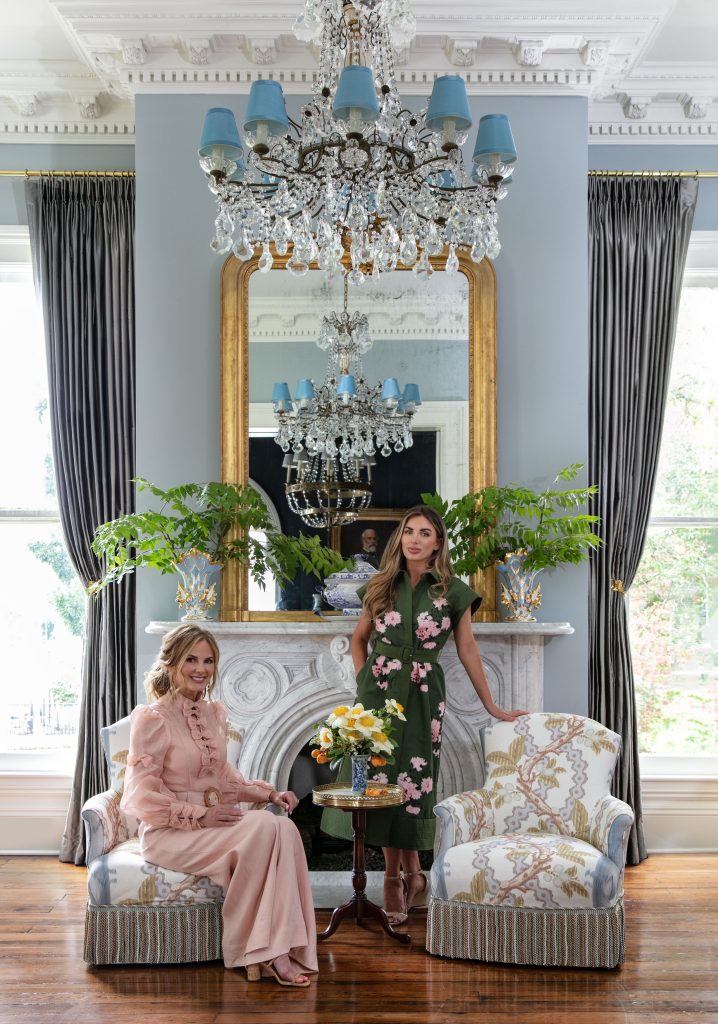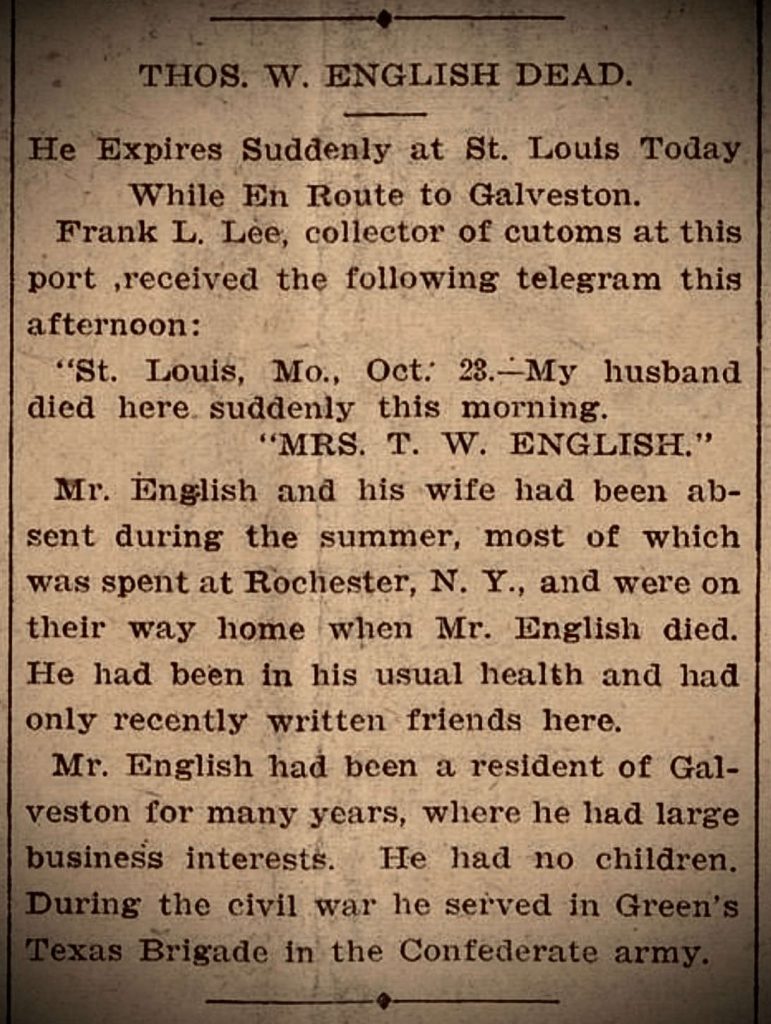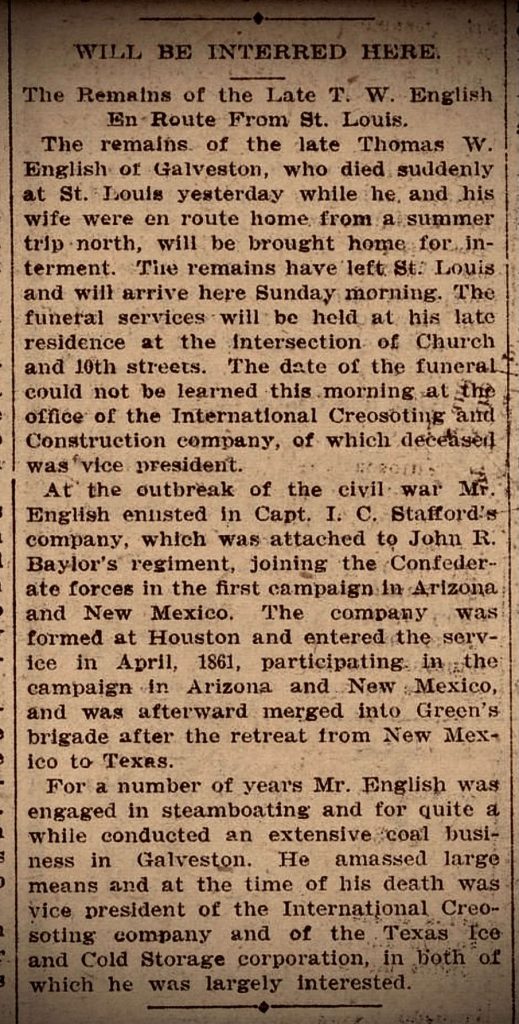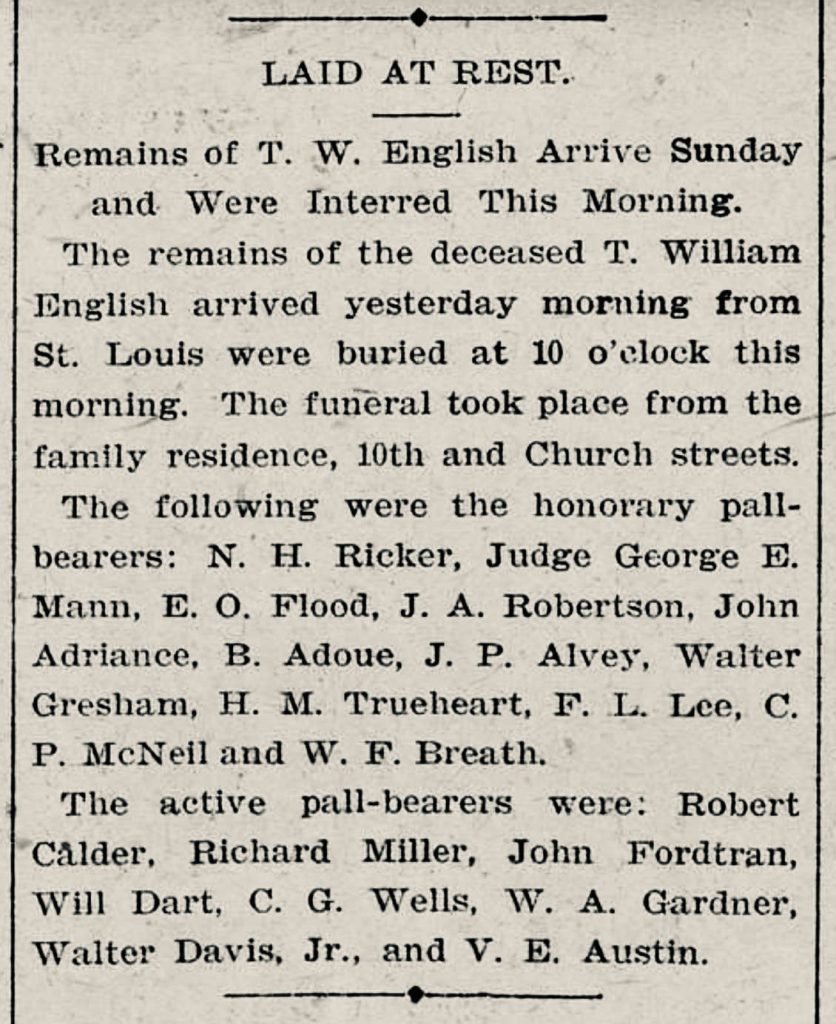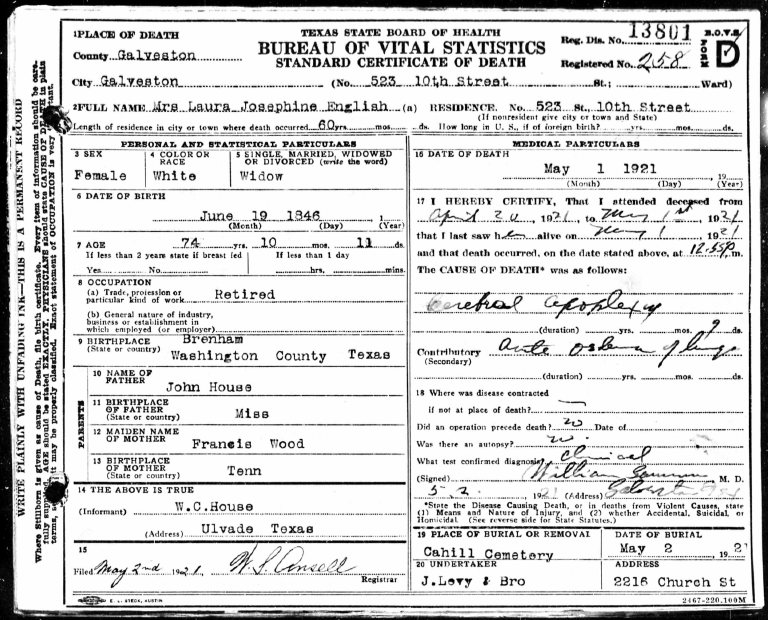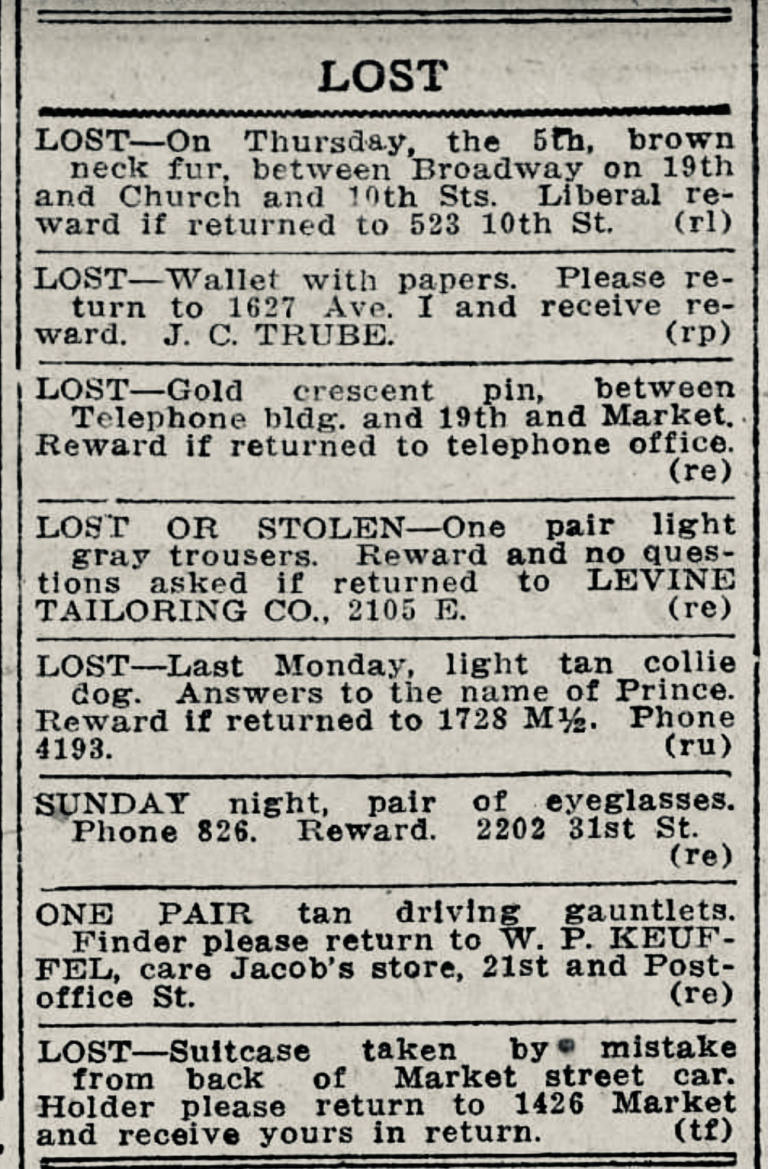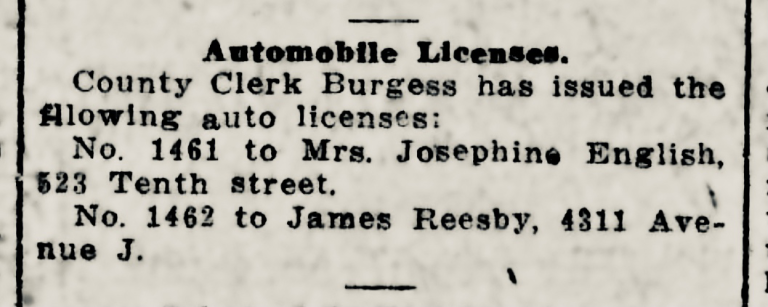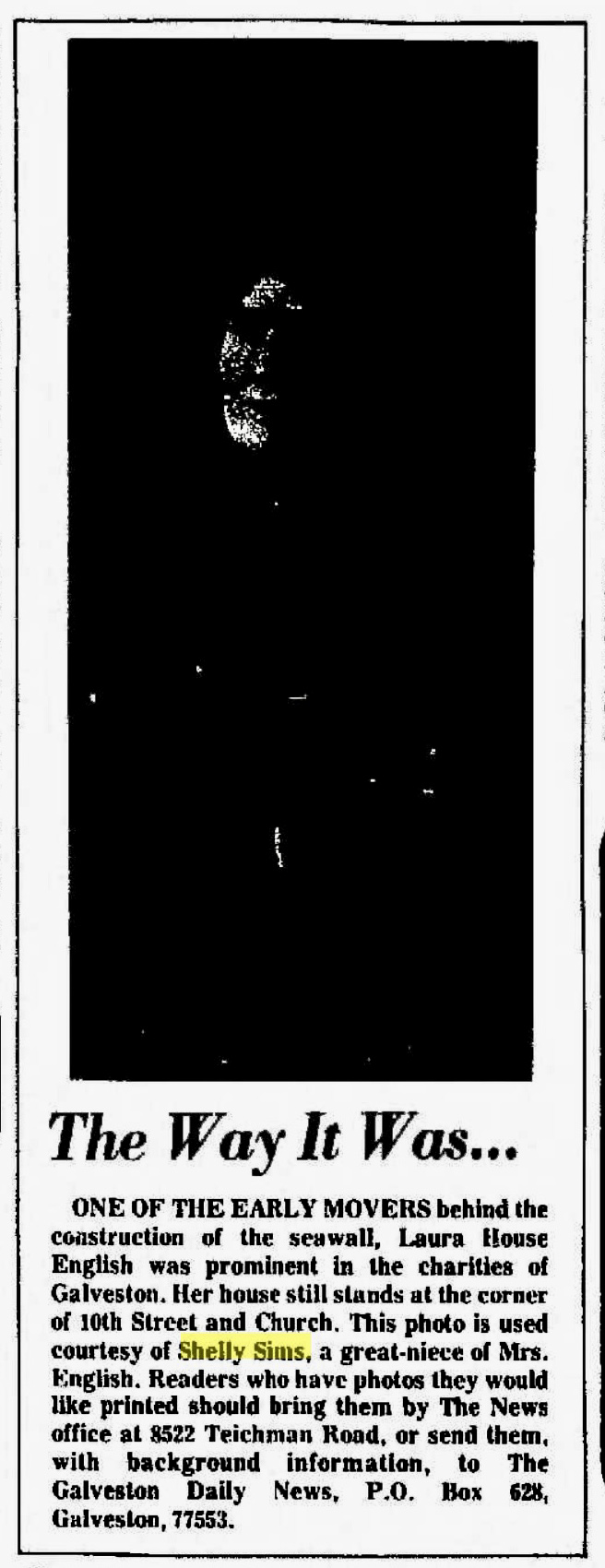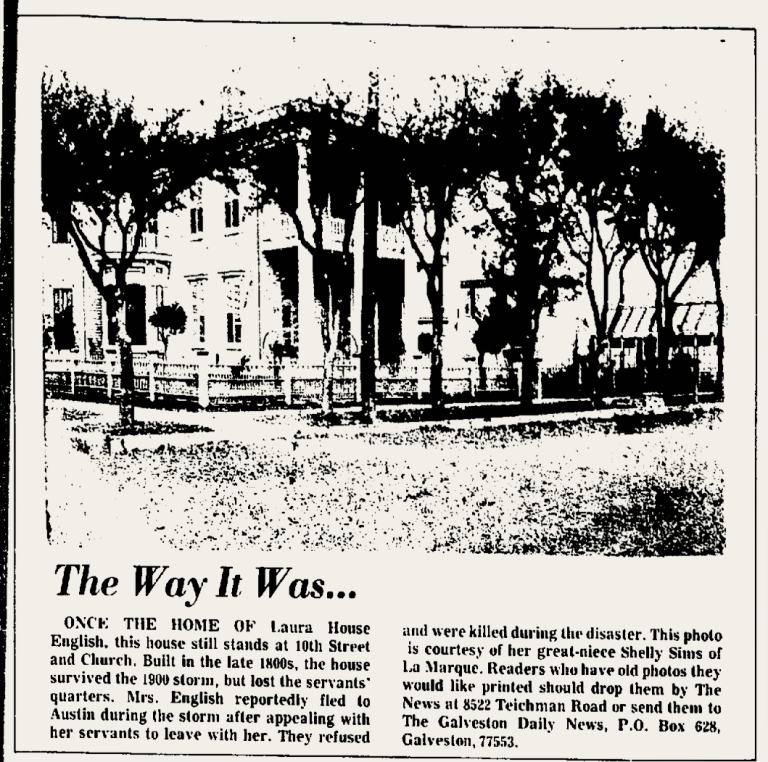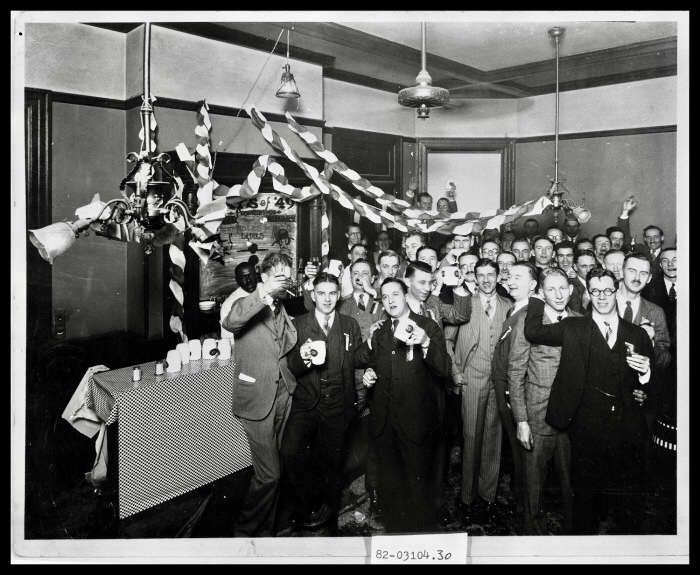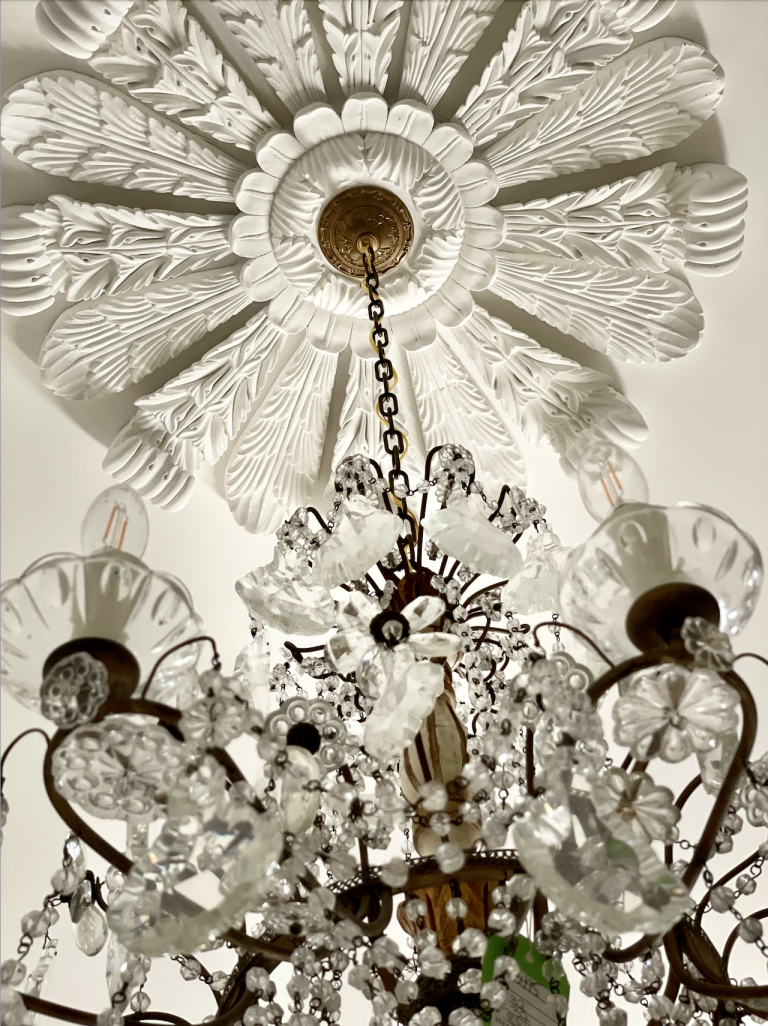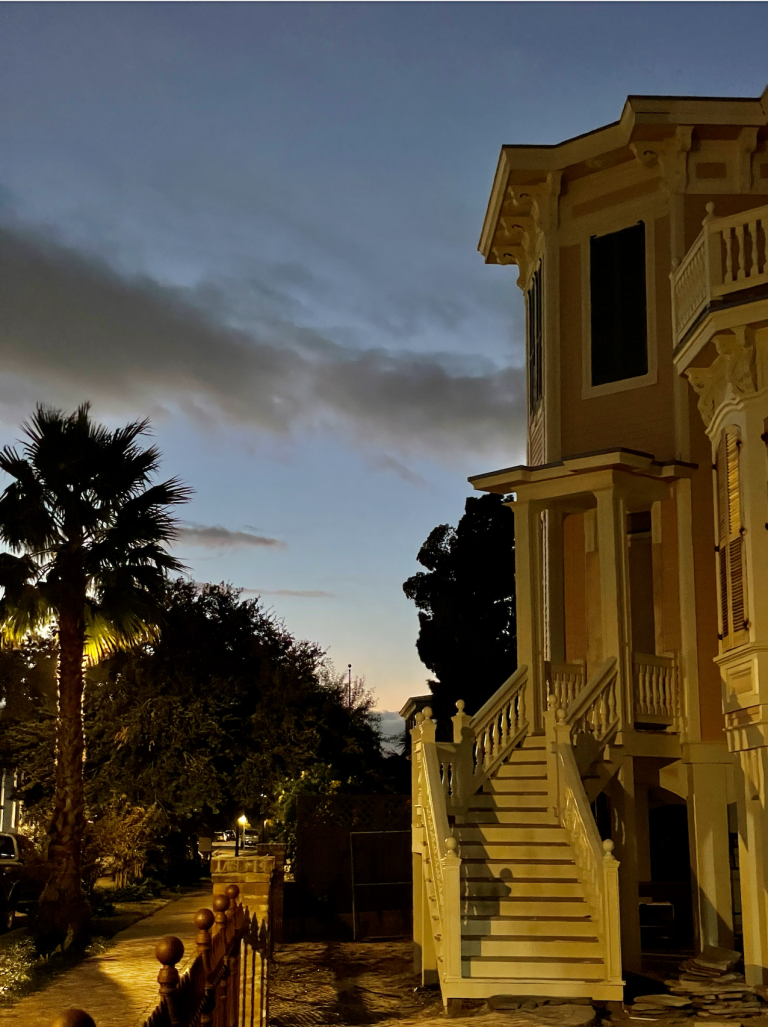Our History
Prepared by Brett Scull
The 1874:
Life on the Corner of Church and Tenth
To appreciate an old house, updating the plumbing, electrical and minimizing the creaks and groans is just not enough. True appreciation of an old home comes from an understanding of the characters who lived their lives within the walls. Like turning the pages of a novel, an old house has new characters and events to discover on each page. As the history unfolds, the characters and chapters weave together, breathing life into the home. While the face of the home may change and the wallpaper may yellow, the stories and sounds of love, loss, and laughter remain forever.
The 1874 Robert J. Hughes House has experienced many facelifts and character changes since her inception. While attempting to understand this grand old house, it is evident that her story is actually that of the fascinating characters who have lived inside. On the corner of Church and Tenth Street, between the bay and the Gulf, many Galvestonians have given the performance of their lives while calling The 1874 home.
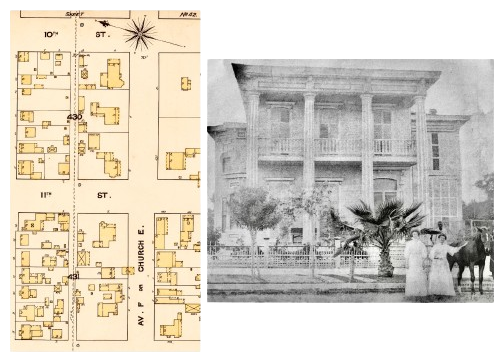

Announcement regarding Th 1874 nearing completion in the Galveston Daily News, October 7, 1984.
Galveston History
The Hughes Family
Captain Robert J. Hughes bears the name of our storied residence and the honor of claiming the first chapter of The 1874. Born in 1836 in Canada, Hughes came to Galveston with his parents in 1847. Prior to moving into The 1874, Captain Hughes commanded a light battery of the Galveston Artillery Company during the Civil War, including service in the Battle of Galveston. After the war, he married Eliza Ellen Groce, daughter of famous early Texan settler, Colonel Leonard Waller Groce. In 1871 and 1874, the Hughes welcomed their two children, Ellen Letitia and R.J. Hughes Jr, into the family.
By 1872, R.J. established himself as a successful businessman, serving as an insurance agent and as the Galveston County Treasurer. He also continued to serve the city as a Lieutenant in the Galveston Artillery Company and as a firefighter with the Hook and Ladder Company Number 1.
As most affluent young families in burgeoning cities, the Hughes’ life within the city appears to carry over into life within the walls of The 1874. As a member of the King Momus Mardi Gras crew and the Galveston Artillery Company, it is easy to imagine the energy as the family, dressed in their costumes, prepared to head to Mardi Gras festivities at the Artillery Hall.
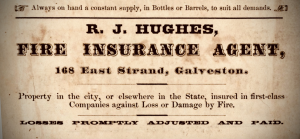
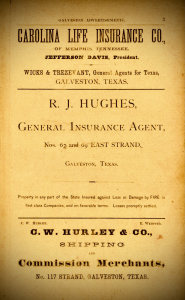
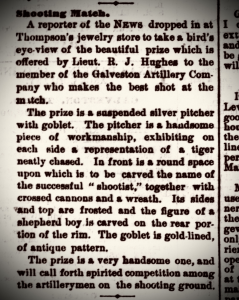
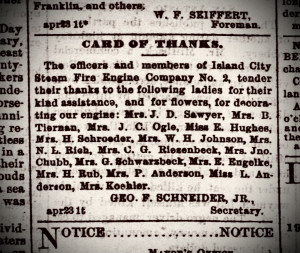

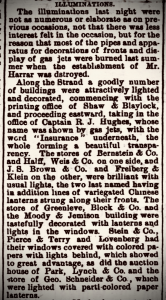


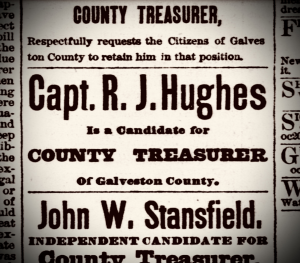
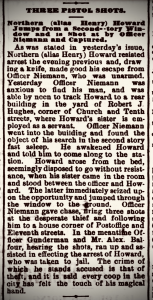
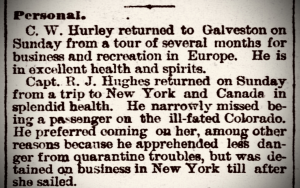
After avoiding the doomed return trip from NY, R.J. returns to Galveston apparently in good health. While in the prime of his life and still serving as County Treasurer, 43-year-old Robert takes his last breath in The 1874 on December 1, 1879. His mortuary report states the cause of death was inflammation of stomach and bowels.

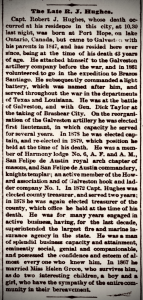

R.J. was survived by Ellen and “two interesting children,” who remained in the home until 1882. Similar to today, in the 19th, most families had their own “baggage.” The Hughes were no exception. By April 1880, Ellen found herself defending her late husband against accusations of financial default. She opened a letter in the newspaper by saying, “I am the widow of the late Robert J. Hughes. Anxiously I have been waiting for one of the many friends he was supposed to have had in life, to come forward and defend him from the calumnies heaped upon his name. Living he had many friends; dead, he seems to have none…”


The English Family
The next chapter begins with the English family in 1884, packing up their belongings at 607 Avenue I and moving a few blocks east to The 1874. Thomas William English was born in 1839 in Pennsylvania. His wife, Laura Josephine House English, was born in Brenham, Texas in 1846.
Laura Josephine House and Thomas William English were married in 1864 in Washington County, Texas. When they moved in in 1884, they had been married 20 years and had no children. T.W., a self-proclaimed capitalist, was always looking for opportunities to invest and for companies to lead. During his time in the home, he co-owned a wholesale grocer, was a coal dealer, President of Galveston Steamship and Lighter Company, investor in various new technologies and served as the President of Texas Ice & Cold Storage Company and Vice President of International Creosoting Company.

Marriage license of TW English and Laura House, July 13, 1864

Property transfer from the estate of R.J. Hughes to T. Williams English.

The only known surviving picture of the 1874 in the 1800's. It appears to be Josephine, a niece and most likely the English's longtime help, Henry Johnson.

Galveston City Directory listing T. William English as President of multiple Galveston companies.

Article and Sanborn Fire Insurance Map displaying the size and success of one of the companies T.W led.

Galveston city directories mentioning the Johnsons who lived and work at The 1874 for many years.
On October 23rd, 1903, T. William English passed away at the age of 64 while on a summer trip to St. Louis with Josephine. His remains were returned to the island and on October 26th the funeral took place in the family residence on the corner of Church and tenth. As a prominent and respected businessman on the island, William’s honorary pall-bearers were all esteemed Galvestonians, including Walter Gresham of Bishop’s Palace.

Josephine English
As The 1874 entered its 29th year, Josephine, now 57, and her longtime servants, Mary and Henry Johnson, were all that remained in the once lively home. With no children of her own, Josephine graciously adopted the role of matriarch of The 1874, a welcoming caregiver for her family and a prominent supporter of her island city for years to come.
In the years following Mr. English’s death, Josephine kept the doors to her home open, welcoming many family members into the safety of The 1874. In this period, the home was once again alive with the presence of many nieces and nephews.
Many articles, City Directories and Census documents demonstrate the amount of family members that spent time living in The 1874 with Josephine.
Josephine never remarried. Instead, she poured all her efforts into driving her island city home forward. William and Josephine had amassed a considerable fortune before his death and Josephine knew exactly how to use it. There are numerous articles that display Josephine’s efforts to ensure Galveston recovered and thrived after the Great Storm of 1900.
Her involvement in Galveston organizations would be difficult to fit on just one page. She was a large contributor to the Presbyterian Church, including funding a chapel dedicated to her late husband. She was an active member of the George Washington Chapter Daughters of the American Revolution, the Sidney Sherman Chapter of the Daughters of the Republic of Texas, the Letitia Rosenberg Home and donated to many other civic causes. There are many examples of Josephine’s dedication to her family, her church and the island she called home, Galveston.
“The committee is gratified to note the interest the ladies are taking in the movement for a beach hotel by subscribing for stock, more than $5,000 have been subscribed from this source since yesterday. The committee is reminded that it should not overlook the ladies, and that a special committee should be appointed to see that the gentler sex be given every chance to invest their money in the public enterprise.” – Galveston Tribune, February 23, 1910
In 1910, 12 years after a fire destroyed the renowned Beach Hotel and the Great Storm of 1900 wreaked havoc, Galveston civic leaders finally gained traction towards their plan to restore the island to its former prominence. As the campaign progressed, typical of the times, the majority of the leaders and donors driving the movement forward were well known Galveston men. Fortunately for Galveston and the Grand Galvez, the matriarch of The 1874, Josephine, did not confine herself to the norms of her generation. Mrs. L. Josephine English was one of the highest 20 contributors to the fund, ultimately having a direct impact on the successful inception of the Galvez.
“All Galveston is rejoicing over the success of the movement to build a $500,000 hotel on the beach for the accommodation of summer and winter visitors to the second greatest port in the United States, and they have good reason for rejoicing. Just a few days over three weeks were required to raise the necessary money, which shows that Galvestonians have an unbounded faith in their town.” – Galveston Tribune, March 11, 1910
Josephine continued to live life on her terms from the comfort of The 1874. In 1910, she took an international trip on the S.S Kaiserin Augusta Victoria to Southampton, England with two of her nieces. The best photograph we have of our story’s matriarch is her passport photo enabling her to go on this journey! In 1914, at age 68, Josephine even got her driver’s license!
In 1921, Josephine took her last breath in The 1874. Her family’s longtime help, Henry Johnson, was still in the home, faithfully helping since 1898. At 74 years of age, Josephine lived in the home for 36 years, making her our longest resident. Her impact on The 1874 is overshadowed only by her contribution to the well-being of the island she called home. Remnants of her influence remain today in the Grand Galvez, The First Presbyterian Church and the Letitia Rosenberg Home. The 1874 will always be home to Mrs. Laura Josephine English.
Soon after Josephine’s death, The 1874 is listed for sale.
Revolving Door
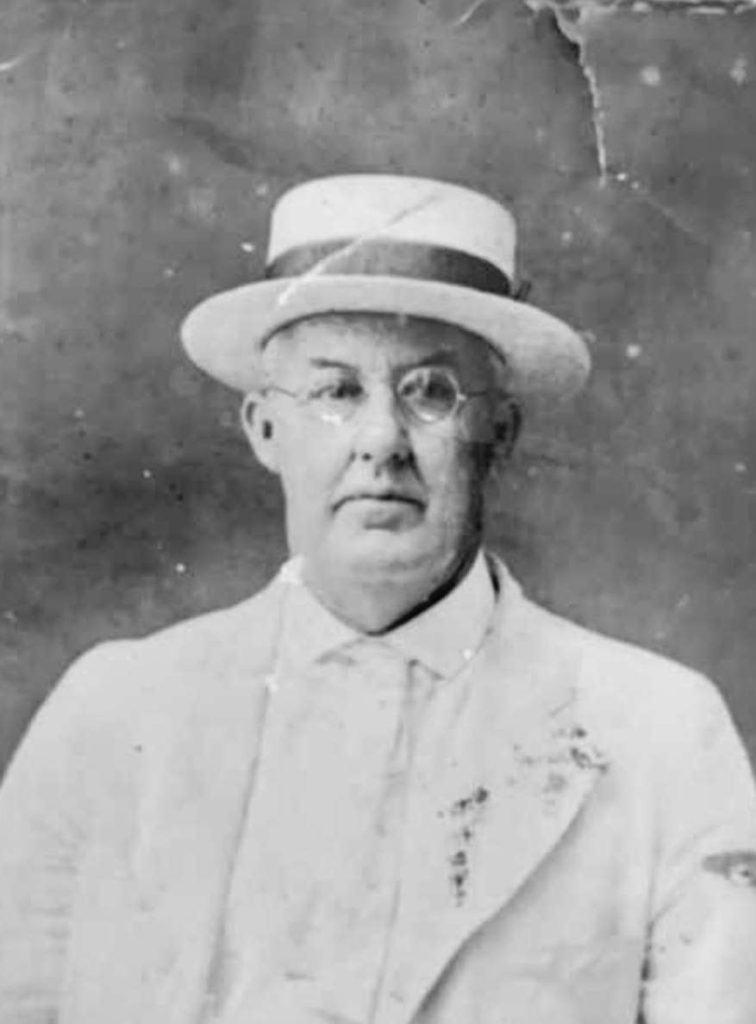
Police, fire commissioner and VP of Galveston Baseball & Athletic Association, RP Williamson Senior purchased the home in 1933. From 1930 to 1957, over 200 male medical students called The 1874 home. In 1933, RP conducted large scale renovation and remodeling, including turning the stables into a very large locker-room style bathroom. With names like Tex Blocker, Texas Higgs, Tex Hillsman, Tex Folbre and Tex Hooks, it is fair to say that Phi Rho Sigma and Phi Alpha Sigma had their fair share of Texas-sized adventures in The 1874.
In 1955, another interesting chapter in The 1874 began. RP Williamson Junior transferred the home to Reverend John E. Hines of the Protestant Episcopal Church. Until 1963, the home was used for convalescence for aging members of the church when it was transferred back to the Williamson family. JH Williamson Junior and his wife, Marian, continued to utilize the home for boarding, although Marian moved into the home near the end of her life, from 1996 to 1999. In 2005, after Marian passed away, the home was sold to Timothy Sawyer Junior. Tim and Kelly lived in The 1874 from 2005-2016.
Photographs from The 1874’s fraternity years. The photo on the right is not inside the home but features the same medical fraternity having a celebration.
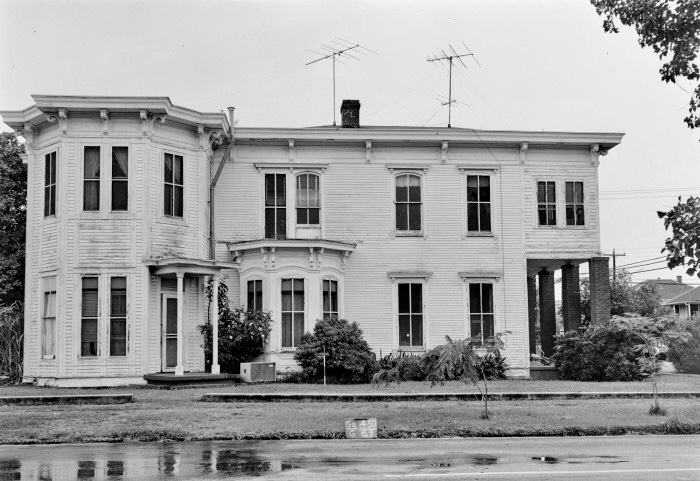


The Next Chapter - The 1874
In 2016, Mary Louise Stonecipher purchased the Robert J. Hughes House with her daughter Jordan Stonecipher Vaughn. Included with acceptance of stewardship of the grand home into her next chapter was Mary-Louise and Jordan’s vision for revitalizing The 1874 to once again stand amongst the grand homes of Galveston and to allow others to experience the beautiful home.
As all aspiring old home lovers and renovators have realized, The 1874 restoration was a labor of love and passion. To undertake a historic renovation with any other approach is sure to lead to failure.
The 1874 being raised for the second time in 2016. The home was first raised after the Great Storm of 1900. Glass bottles found during renovation. An intact cistern was also discovered buried underground. The new carriage house being built where the original once stood. The original carriage house is actually right across the street at Homer House (926 Church Street).
Instead of lamenting setbacks, the mother/daughter duo have embraced each experience as an opportunity to learn, love and understand the soul of The 1874. While others may have seen a dilapidated 150-year-old structure, Mary-Louise and Jordan envisioned a Victorian life full of beautiful things between the waters. With a quick glance at the bay window and the dining room entrance, one can almost see the carriages pulling up to drop-off their Victorian passengers for a party in the ballroom.
As the Hughes and English families did before them, Mary-Louise and Jordan have invested their heart and soul into The 1874. The goal of the restoration was to breathe life back into the structure by discovering those who called her home. With inspiration from New Orleans and Charleston, The 1874 is designed to welcome guests with old house character seamlessly blended with modern convenience. Having survived the Great Storm of 1900 and being raised twice, the home is quintessentially Galveston. On behalf of all those who have called The 1874 home, we are happy to welcome you for a glimpse into life on the corner of Church and Tenth.
